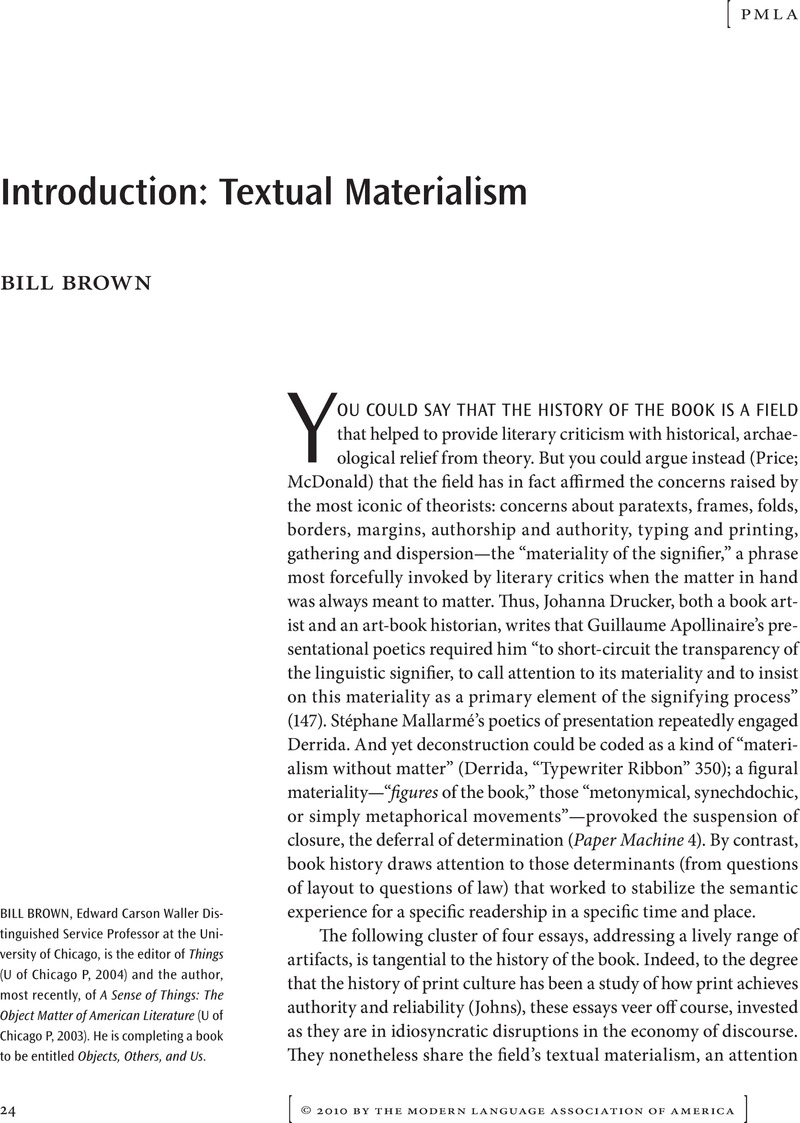Crossref Citations
This article has been cited by the following publications. This list is generated based on data provided by Crossref.
Roland, Meg
2011.
Facsimile Editions: Gesture and Projection.
Textual Cultures,
Vol. 6,
Issue. 2,
p.
48.
Brown, Catherine
2011.
Manuscript thinking: Stories by hand.
postmedieval: a journal of medieval cultural studies,
Vol. 2,
Issue. 3,
p.
350.
Foys, Martin K.
2012.
A Handbook of Anglo‐Saxon Studies.
p.
133.
Mills, Victoria
2016.
Travel Writing, Visual Culture and Form, 1760–1900.
p.
65.
Andersen, Tore Rye
2019.
Cyberspace Revisited: A Radial Reading of William Gibson's “Burning Chrome”.
The Journal of American Culture,
Vol. 42,
Issue. 2,
p.
121.
2019.
Russell, Gillian
2020.
The Ephemeral Eighteenth Century.
Hatton, Nikolina
2020.
The Agency of Objects in English Prose, 1789–1832.
p.
137.
Hatton, Nikolina
2020.
The Agency of Objects in English Prose, 1789–1832.
p.
1.
Heritage, Barbara
2020.
Charlotte Brontë, Embodiment and the Material World.
p.
207.
Sørensen, Mette Biil
2022.
Material translation: How do variations in form and materiality influence the ways we read translated editions of a book?.
Orbis Litterarum,
Vol. 77,
Issue. 4,
p.
252.
Wylot, David
2024.
Metabibliographic Fiction: Metafiction After the Death of the Book in Steven Hall’s
Maxwell’s Demon
and Nicola Barker’s
I Am Sovereign
.
Critique: Studies in Contemporary Fiction,
p.
1.
Andersen, Tore Rye
2024.
Roaming Pauses in Cormac McCarthy’s
The Road
.
ANQ: A Quarterly Journal of Short Articles, Notes and Reviews,
p.
1.



